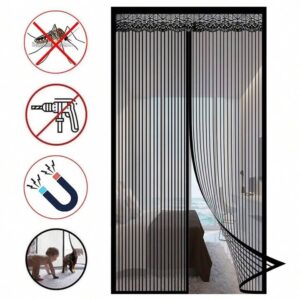In today’s fast-paced urban life, balconies have become cherished spaces for relaxation, fresh air, and even remote working. Whether you live in a high-rise apartment or a villa, your balcony deserves the same attention as your interiors. But what if you could enjoy your balcony without worrying about harsh sunlight, rain, wind, dust, or insects? That’s where a zip screen for balcony becomes the perfect solution.
In this blog, we’ll explore what a zip screen is, how it works, the benefits of installing one on your balcony, and why it’s an ideal addition to any modern home.
What is a Zip Screen for Balcony?
A zip screen is a modern and smart outdoor shading solution designed to provide weather protection, privacy, and aesthetic appeal. It features a high-quality fabric screen attached to a guided track system, which ensures smooth opening and closing.
The term “zip” comes from the zipper mechanism that keeps the screen securely fixed within the side channels, even in strong winds. This makes zip screens an ideal choice for open areas like balconies, patios, verandas, and terraces.

How Does a Zip Screen Work?
Zip screens operate either manually using a crank or automatically via remote control or a smart home system. The fabric is rolled up into a cassette box mounted at the top, and the sides are held in place with zip-guided tracks.
When deployed, the screen forms a tight seal that blocks wind, insects, rain, and sunlight—without compromising the view or ventilation.
Benefits of Installing a Zip Screen for Your Balcony
Zip screens operate either manually using a crank or automatically via remote control or a smart home system. The fabric is rolled up into a cassette box mounted at the top, and the sides are held in place with zip-guided tracks.
When deployed, the screen forms a tight seal that blocks wind, insects, rain, and sunlight—without compromising the view or ventilation.
Installing a zip screen on your balcony can transform your outdoor space in several valuable ways:
1. Protection from Weather Elements
Zip screens act as a shield against rain, dust, wind, and UV rays. Whether it’s a blazing summer afternoon or a rainy monsoon day, you can still enjoy your balcony without discomfort.
2. Enhanced Privacy
If your balcony faces the street or neighboring buildings, zip screens provide a layer of privacy without fully closing off your space. You can relax or work without feeling exposed.
3. Insect and Mosquito Barrier
Evenings are perfect for balcony lounging—but they also attract mosquitoes. Zip screens help block insects without needing chemical sprays or nets.
4. Energy Efficiency
By blocking direct sunlight, zip screens reduce indoor heat buildup. This means your air conditioner has to work less, helping you save on electricity bills.
5. Modern Aesthetic
Zip screens are sleek and customizable to match your home’s decor. They give your balcony a clean, contemporary look.
6. Durable and Low Maintenance
Made with weather-resistant fabric and powder-coated aluminum frames, zip screens are built to last and require minimal maintenance.
7. Versatile Operation
You can opt for manual zip screens or go for motorized versions integrated with remote controls, sensors, or even mobile apps.
Where Can You Use Zip Screens?
While they’re most popular on balconies, zip screens are also ideal for:
Patios and decks
Pergolas
Verandas
Outdoor cafes and restaurants
Garden enclosures
Office break areas
Materials Used in Zip Screens
High-quality zip screens are built with a combination of durable materials:
Fabric: PVC-coated polyester, fiberglass mesh, or acrylic fabric. These are UV-resistant, tear-resistant, and waterproof.
Frame: Aluminum tracks with powder coating for corrosion resistance.
Motor: For automated models, high-performance tubular motors from brands like Somfy or Nice.
These materials ensure longevity and performance in all weather conditions.
Customization Options
Zip screens can be tailored to your needs and style preferences. Here are some customization features you can choose:
Color of fabric (neutral tones, black-out, transparent, etc.)
Frame color to match your balcony design
Motorized or manual operation
Size and dimensions for custom balcony fittings
Sensor integration (sun, wind, or rain sensors for automation)
Installation Process
Installing a zip screen is a straightforward process handled by professionals:
Site inspection and measurement
Selection of fabric, color, and operation method
Frame mounting and track installation
Screen fitting and testing
Demo and handover
Most installations can be completed within a day or two, depending on the size and complexity of the balcony.
How to Maintain Your Zip Screen
Clean regularly with a mild soap solution and water.
Avoid harsh chemicals that may damage the fabric.
Check the tracks for debris or blockage.
Service the motor periodically if using an automated system.
Retract the screen during extreme weather for extra protection.
Cost of Zip Screen for Balcony in 2025
The price of zip screens depends on various factors:
Size of the balcony
Fabric type (transparent, mesh, blackout)
Manual or motorized system
Brand and quality of materials
On average, the cost may range from ₹300 to ₹700 per square foot in India. For motorized versions, expect a higher range starting at ₹800 per sq. ft. and up.
Conclusion
A zip screen for balcony is more than just an accessory—it’s a smart investment in comfort, privacy, and aesthetics. Whether you’re looking to create a cozy reading nook, an insect-free evening hangout, or a shaded working space, zip screens offer the perfect solution.
With customizable options, weather-resistant materials, and modern design, zip screens are quickly becoming the go-to choice for urban homeowners who value style and functionality.
Thinking of upgrading your balcony with zip screens?
Contact your local supplier or reach out to us for a free quote and design consultation!


